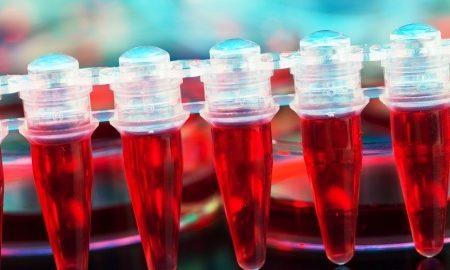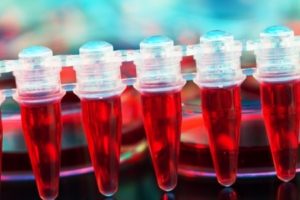Multiple Clinical Trials in the Works for Stem Cell Treatment in Parkinson’s Disease

 A diagnosis of Parkinson’s disease comes with the inherent knowledge that there is no cure for the disease. Treatments are available to slow the progression and control symptoms to an extent, but there is no way to replace the dopaminergic neurons that have already died. Thankfully for patients and their loved ones, clinical trials are underway to attempt to replace neurons in the brains of Parkinson’s patients. One such trial is originating out of San Diego, where work from the Scripps Research Institute is preparing to generate and inject dopaminergic neurons derived from induced pluripotent stem cells.
A diagnosis of Parkinson’s disease comes with the inherent knowledge that there is no cure for the disease. Treatments are available to slow the progression and control symptoms to an extent, but there is no way to replace the dopaminergic neurons that have already died. Thankfully for patients and their loved ones, clinical trials are underway to attempt to replace neurons in the brains of Parkinson’s patients. One such trial is originating out of San Diego, where work from the Scripps Research Institute is preparing to generate and inject dopaminergic neurons derived from induced pluripotent stem cells.
Injection of IPSC-derived Dopaminergic Neurons
Scientists at the Summit for Stem Cell Foundation have developed and fine-tuned their method for isolating patient fibroblast cells, transforming the cells into induced pluripotent stem cells, and finally differentiating the stem cells into dopaminergic neurons (1). These neurons can be injected into the brain and used to replace the lost neurons, restoring control of motor function and relieving other symptoms. Importantly, this work can be done by using the patient’s own stem cells, avoiding the need for immunosuppression and the risk of rejection. This trial is currently under FDA review with the potential to begin in 2019 with 10 patients. If successful, this trial would expand and provide hope for millions afflicted with Parkinson’s disease.
Injection of Proprietary Neural Stem Cells
While this trial is currently under review, another trial is underway in an Australian clinical trial. This trial uses a proprietary stem cell product from International Stem Cell Corp. and has now been used in 10 patients. These trials are closely monitoring patients for side effects, but thus far appear to be safe. The company’s chief scientific officer, Russell Kern, stated that “based on the available clinical data, we are confident that the therapy is safe, well-tolerated, and can potentially improve the quality of life of the patients” (2). These cells are different than the other trial, in that neural stem cells are derived from unfertilized or parthenogenetic eggs instead of patient cells. This leads to a risk of rejection, meaning that patients must be immune-matched to receive the injection.
Another major difference between the trials is that this trial injects neural stem cells, which are then allowed to differentiate in the patient into neurons and glia, the support cells of the brain. This means less control of what cell types are formed, but would allow for potential expansion of cells in the patient after injection.
As results from both the prospective trial and the current trial come in, it will be important to look at safety, efficacy, and other logistical considerations with these therapeutic options. However, the fact that these trials are progressing suggests that we may have numerous other trials for neuronal replacement in neurodegenerative diseases coming in the near future.
References
- https://www.kpbs.org/news/2018/nov/02/parkinsons-patients-preparing-brain-cell-replaceme/
- https://www.sandiegouniontribune.com/business/biotech/sd-me-parkinsons-stem-cell-treatment-20181018-story.html


